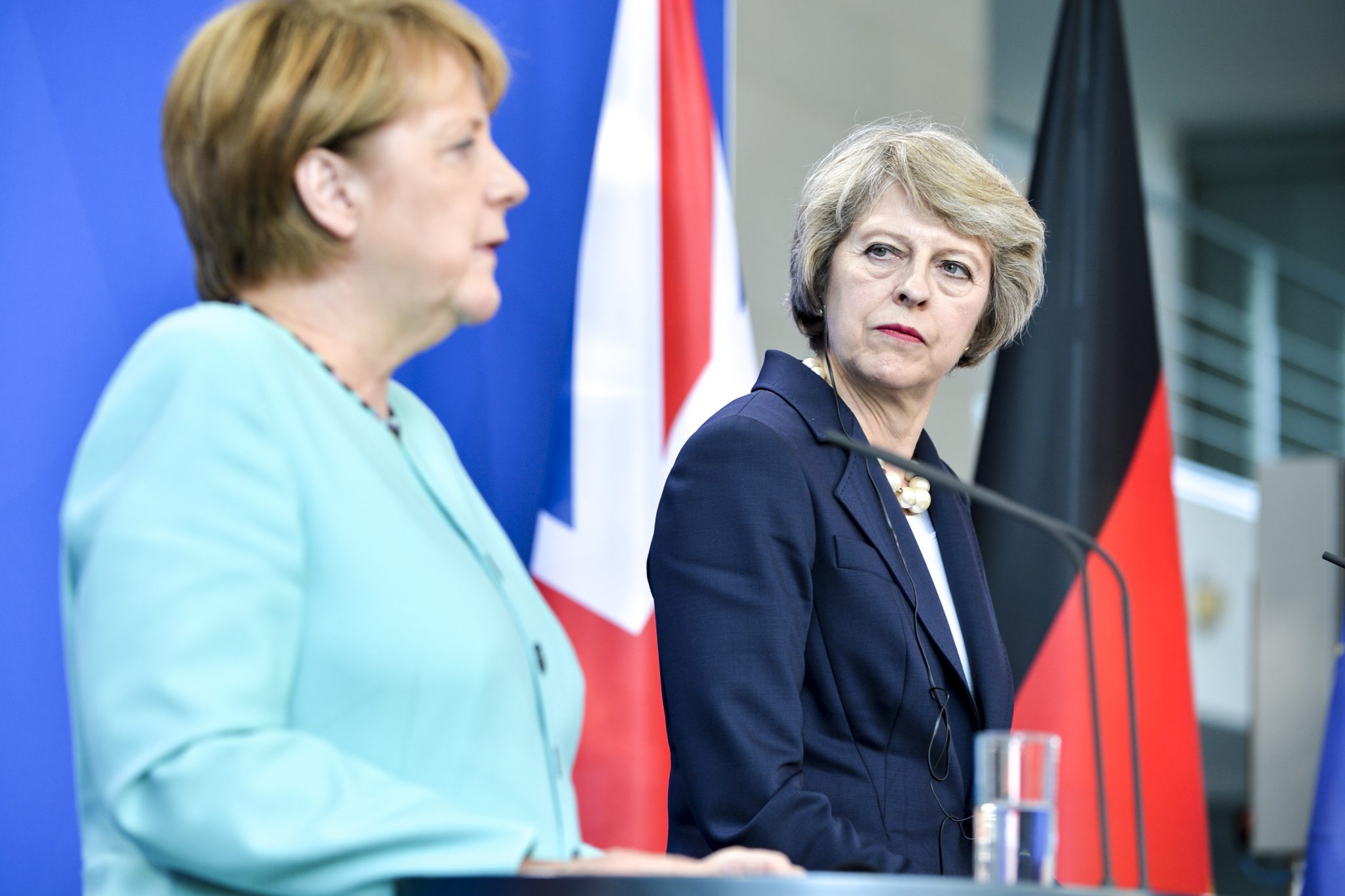
by Daniel Fiott
Technology is a means to end. It can serve as a deterrent, greatly alter the balance of power on a battlefield and it can offer a political buy-in in military alliances. For European states in NATO, the two major contributions to the alliance have been promises on defence spending (broken or otherwise) and the deployment of forces in places such as Afghanistan.
Technological prowess has not been the overriding currency of Europe’s engagement with NATO. Yet, as Louth and Bronkhave recently stated, scientific ingenuity and the ability to invent and develop innovative technologies are an essential, if often forgotten, element of power. This is not to say that Europeans will ever match the financial and political commitment to military-technology witnessed in the United States (US), and nor is it to say that Europe cannot innovate, but more needs to be done to invest in, showcase and promote Europe’s defence innovation.
European innovation
European firms are investing in a number of niche technologies. For example, Saab Group and its research partners at Linköpking University are currently studying the potential role graphene – the thinnest, strongest and most conductive material ever – could play in developing camouflage. BAE Systems are already supplying 3D printed parts for the Tornado fighter jet. The point is not that European firms cannot innovate rather it is that firms are conducting much of the research. This is of course to be celebrated, but the serious issue is that in Europe public investment in defence R&D is on the decline. In 2006, members of the European Defence Agency invested a total €9.79 billion in R&D but in 2013 that stood at €7.53 billion. States still have an important role to play in stimulating defence R&D, even though defence firms are moving ahead in their own right to discover and nurture the next big technological breakthrough.
 Just take Airbus Group. In May 2015 the company established a venture capital fund and innovation centre in Silicon Valley, which will respectively be headed by CEOs that worked with Hewlett Packard, Google, Motorola and the US government agency DARPA. By gaining a foothold in Silicon Valley, Airbus hopes to be able to invest in cutting-edge technological innovation. The very fact that Airbus is now present in Silicon Valley, as opposed to any equivalent European version of the Valley, speaks volumes about Europe’s position in the global technology league table. Likewise, Thales recently unveiled its technology incubator project called xPlor, which will partner with the Massachusetts Institute of Technology’s Media Lab and the Cambridge Innovation Center, to develop defence-relevant technologies. Such ventures do not just highlight the propensity for European firms to globally source technology, it could symbolise an important evolution in defence innovation in Europe.
Just take Airbus Group. In May 2015 the company established a venture capital fund and innovation centre in Silicon Valley, which will respectively be headed by CEOs that worked with Hewlett Packard, Google, Motorola and the US government agency DARPA. By gaining a foothold in Silicon Valley, Airbus hopes to be able to invest in cutting-edge technological innovation. The very fact that Airbus is now present in Silicon Valley, as opposed to any equivalent European version of the Valley, speaks volumes about Europe’s position in the global technology league table. Likewise, Thales recently unveiled its technology incubator project called xPlor, which will partner with the Massachusetts Institute of Technology’s Media Lab and the Cambridge Innovation Center, to develop defence-relevant technologies. Such ventures do not just highlight the propensity for European firms to globally source technology, it could symbolise an important evolution in defence innovation in Europe.
Sources of defence innovation
It is no secret that defence procurement will need to evolve in the future if it is to keep up with the pace of new and emerging technologies; especially when they emanate from the commercial rather than defence sector. This is something even the US Department of Defense has to reckon with. New acquisition processes and non-conventional sources of investment will at some point have to be countenanced by European states. Non-conventional sources of defence innovation will be critical for two reasons: first, because the sophisticated technology needed for the maintenance of Western power into the future is just as likely to come from the commercial sector; and second, because in Europe traditional sources of defence R&D (i.e. through public funds) are likely to keep on falling – EU plans to use the EU budget for defence R&D in the future are unlikely to turn the tide any time soon. There are, however, a number of interesting ideas for non-conventional sources of innovation.
Academia
Research institutes and universities already play a role in European defence innovation; they are important centres of technological ingenuity and development. Nevertheless, there is room for improvement in the way Europe’s ministries of defence (MoD) relate to their innovation centres. As one highly illuminating RAND report stated recently, in the specific case of the British MoD there is a need for a more open innovation culture within the ministry, more space is needed for innovation to emerge, there is a need to develop diverse networks and interactions and external actors should be empowered and motivated to engage with the MoD. A number of European MoDs must surely be in the same position as the UK. One of the recommendations proposed by RAND is that the UK MoD should ‘change the location of innovation‘ so that inventors, investors and industry can partner together. While it may take time for various institutions to change their culture and behaviour towards defence innovation, it is clear that academia has a crucial role to play in defence innovation.
Big Data
Europeans should also look at the role ‘big data’ could potentially play in helping to make the planning and management of defence contracts and procurement processes more efficient. As one rather interesting report by Couch and Robinsputs it, there is great potential for Big Data in the defence and security sector. ‘Big Data’ refers to the ability to organise and comprehend large-scale volumes of data. As the report goes on to say, like other essential factors of production such as hard assets and human capital, it is increasingly the case that much of modern economic activity, innovation and growth simply couldn’t take place without data. From an operational point of view the United States is already using Big Data for its war fighters and vehicle maintenance, so perhaps it will not be too long before Big Data plays a more prominent role in defence innovation.
Venture Capital
One other idea that this author has been toying with over the past few weeks has been the potential role of crowdfunding (yes, crowdfunding!). This idea may not be as far-fetched as it sounds. Indeed, it is interesting to note that the cyber domain has benefitted from crowdfunding. Medical research is also an area where crowdfunding is playing a role. Why not defence? Crowdfunding can be defined as an alternative financing vehicle that relies on a pool of investors that are sourced via specifically designed internet platforms. Crowdfunding brings together an individual(s) who develop an idea or project and a pool of investors based online. Crowdfunding is a growing market. Some estimates claim that in 2012 the global crowdfunding market was worth €2.2 billion and that this represents an 80% increase on 2009 when the market was worth €400 million. As far as Europe is concerned, it is estimated that in 2011 the continent ‘raised around more than €300 million, one third of the world market,’ from crowdfunding. World Bank projections forecast that the crowdfunding market could be worth $90-$96 billion by 2025.
Exploring the role of defence-relevant crowdfunding should be mindful of a few caveats.First, it would probably not be feasible for individual online investors to fund sensitive programmes (e.g. related to ballistics technologies). Indeed, it is unclear whether individual investors would want to invest in such technologies on ethical grounds, and surely governments would be cautious about individual investors owning equity in such projects (especially if these investors come from outside Europe). Second, there are few guarantees or laws preventing additional deals being done between investors and owners offline and there is little information disclosure on who investors are. Third, sources of crowdfunding tend to be geographically delimited to particular countries and cities and projects can still be hit by time delays. Finally, given that products and ideas are shared online to encourage investment there is an important need to protect Intellectual Property Rights.
Yet, despite these caveats think of the role venture capital schemes such as crowdfunding might play in enabling defence-relevant start-ups and SMEs to demonstrate technology innovations and breakthroughs. One is not speaking about sourcing crowdfunds for platforms such as frigates or air tankers, but think of the role such investments could play in bringing innovative dual-use technologies to the development and demonstration phase. Thus, whileindividuals from the 18-34 age bracket might not want to invest in tanks they might just want to invest in the next big technological innovation that is of use to both commercial and defence sectors (i.e. think of where GPS stands today). Key enabling technologies will be a crucial part in making military platforms more adaptable and effective in the future, but new ways of sourcing investment and encouraging start ups is a precondition to enabling technological breakthroughs to be developed. Also keep in mind that the main element of successful crowdfunding is that investment is going towards a good idea; thus no idea, no money. The power of the internet is an under-utilised tool in defence innovation.
Towards the unconventional
Whether unconventional venture capital schemes such as this would ever take off the ground in the defence sector remains to be seen – if they do, they may still only represent a drop in the ocean compared to public investment in defence. Nevertheless, what such thinking highlights is that there is a real need to reform the way Europeans think about military-technology, how they develop it and how they use it. Urgent questions need to be answered: are Europe’s procurement systems too inefficient and expensive? Do these systems stifle technological innovation? Have they been fully calibrated to benefit from technological discoveries being made in the commercial sector? These questions have long been on the policy agenda, but time is of the essence if Europe is to be a world-beater in military-technological innovation. The US is already pushing ahead with its ‘third offset strategy’, and if Europe is to play any role in this strategyother than in a doctrinal and operational sense, then it needs to start taking defence innovation much more seriously than it does at present.
- This article first appeared on European Geostrategy



